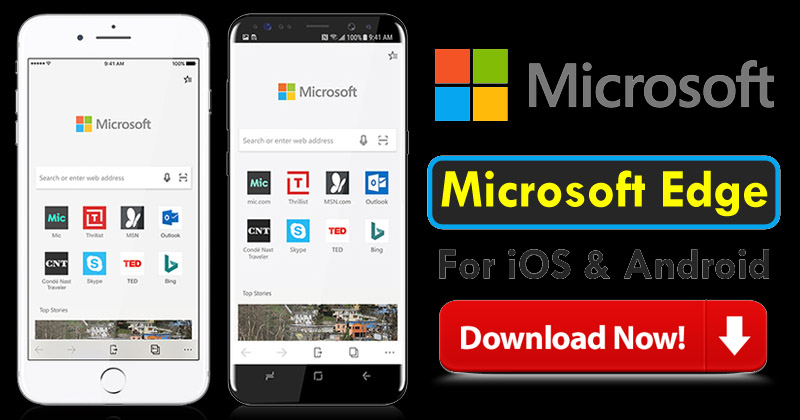- Microsoft Edge For Mobile Phones
- How To Use Edge Browser
- Mobile Browser Edge Vs Chrome
- Edge Mobile Browser App
Browsers save (or “cache”) a lot of information in order to increase web performance, including images, text, and styling information for the site. This is usually a great feature, because it allows you to surf your favorite websites with minimal load time. However, when it comes to viewing recent changes to the site, it can cause some problems; namely, that the changes aren’t there!
In order to see recent changes to your website, you may have to “hard refresh” the browser. This can be tricky on a mobile device because you cannot simply press Cmd + Shift + R (or Alt + Shift + R, if you’re on PC). That’s why we’ve compiled a list of the most common devices and browsers, with hard refresh directions specific to each one:
Chrome
Use Microsoft Translator in Microsoft Edge browser. The new Microsoft Edge supports translation for more than 60 languages. The browser will automatically prompt you to translate a webpage when when the page you're opening is in a language other than those listed under your preferred languages in. On Android, updating the browser is just like updating any other app. Head over to the Google Play Store and search for Microsoft Edge. If the browser has a pending update, you should see an. I think like both browsers (Microsoft Edge and Google Chrome), as well as other Chromium-based browsers. The legacy version of Microsoft Edge became unsuccessful, due to fewer features of the browser. I used Google Chrome as my default browser and I became to like it a lot. Since Microsoft Edge became Chromium-based, I became to like it. Using Microsoft Edge on Android. Like many of its competitors, the Microsoft Edge browser on Android supports tabbed browsing, favorites, custom home pages, private browsing, and more. RELATED: How to Enable Private Browsing on Any Web Browser. To go to a website, tap “Search or Enter Web Address” in the middle of the Edge splash screen.

Android:
Firefox
iPhone:

Internet Explorer
Windows Phone:
Safari
iPhone/iPad:
* If you do not want to clear your History, click “Advanced” > “Website Data” > and “Remove All Website Data”.
Looking for how to clear your cache on a desktop browser? Check out this article on how to hard refresh on windows, linux, or mac.
Troll Us
The new Microsoft Edge supports translation for more than 60 languages. The browser will automatically prompt you to translate a webpage when when the page you're opening is in a language other than those listed under your preferred languages in settings.
Open a webpage in Microsoft Edge. The browser automatically detects the language of the page and a menu appears asking you to confirm that you want to translate the page.
Do any of the following:
In the Translate to list, choose the language you want to translate the page to. The default is the language you've set for Microsoft Edge.
To translate the page, click Translate.
To always automatically translate from the source language, select the Always translate from [Language] check box.
To skip translation, in the list on the lower right, select Not now to skip translation or Never translate [Language] to never have the panel appear when you go to a page using that language.
Note: You can manually open the panel later, even if you select the option to never translate.
On side of the address bar, you'll briefly see the status showing that the page has been translated.
If you select the translate icon in the address bar, the menu that appears also shows the status.
Manually translate a webpage


If you've set Microsoft Edge to never translate a specific language, you'll still be able to translate it at any time. Just select the translate icon in the address bar and the menu will appear.
Microsoft Edge For Mobile Phones

After the page has been translated, you can translate the page again to a different language or to restore the page to its original language.
To translate the page again to a different language:
On the address bar, select the translate icon .
In the Translate to menu, select the language you want.
Select Translate.
Restore a webpage to its original language
How To Use Edge Browser
On the address bar, select the translate icon .
Select Show original.
Turn on translation in Microsoft Edge
Microsoft Edge is set to offer translation by default, but if this setting has been turned off for some reason, you'll need to set it again. To set whether Microsoft Edge offers translation:
Mobile Browser Edge Vs Chrome
At the top corner of the browser, select Settings and more' loading='lazy'> > Settings.
Select Languages.
Turn on Offer to translate pages that aren't in a language I read.
Edge Mobile Browser App
By default, Microsoft Edge uses the same language as your system. For information about how to set the language for Microsoft Edge, see Use Microsoft Edge in another language.
